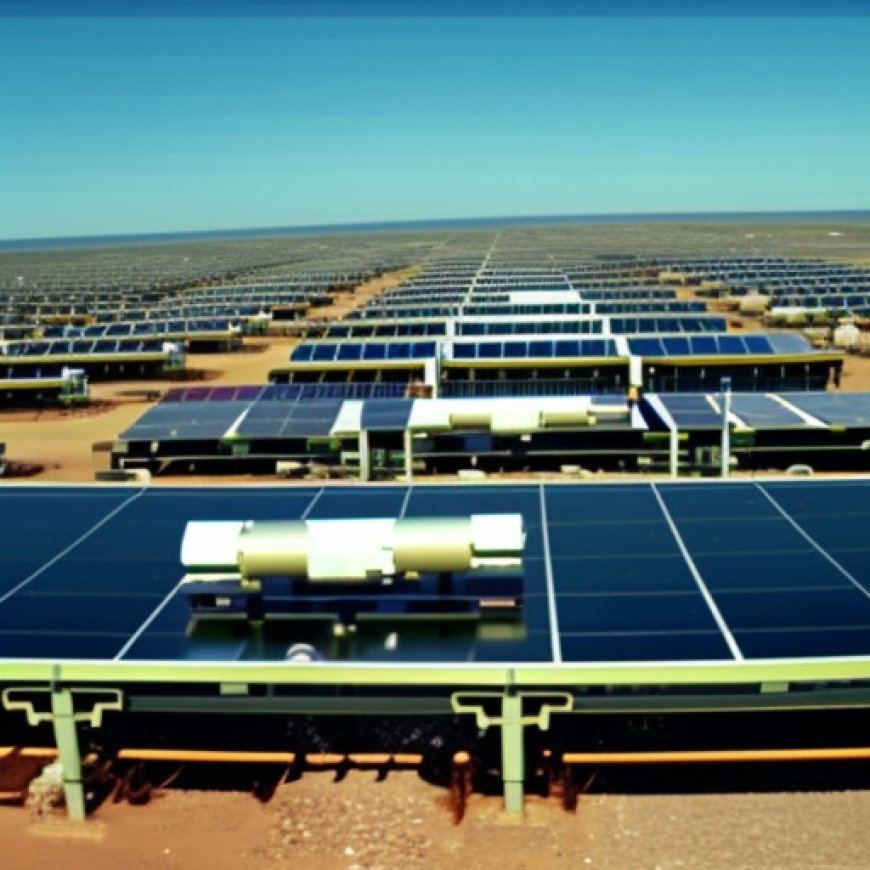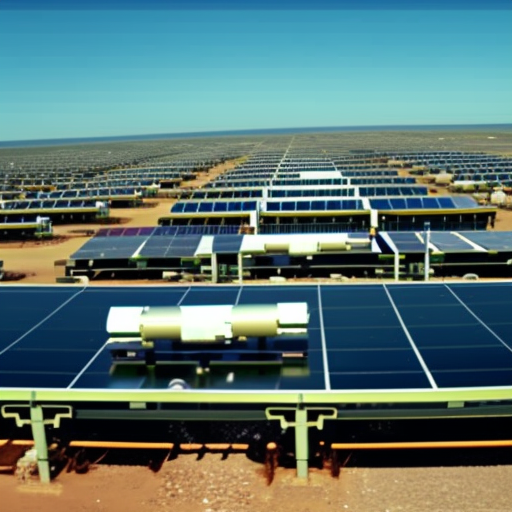Solar Energy Desalination Plants Increasingly Provide Water for Africa – CleanTechnica
Solar Energy Desalination Plants Increasingly Provide Water for Africa CleanTechnica


Sustainable Desalination Projects in Africa to Address Water Scarcity

Introduction
Clean drinking water remains a pressing issue in many African countries. However, the expansion of renewable energy sources is enabling the use of desalination to provide clean water to millions of people without exacerbating greenhouse gas emissions. This article explores the growing importance of desalination as a key component of water supply strategies in Africa.
The Impact of Water Scarcity in Africa
Africa is facing increasing water stress, with the proportion of people with safe access to drinking water only marginally increasing from 17.9% to 23.7% in sub-Saharan Africa since 2000. The United Nations predicts that by 2030, 75 to 250 million people in Africa will be living in areas of high water scarcity, potentially leading to the displacement of 24 to 700 million people. These challenges necessitate innovative solutions to ensure access to clean drinking water.
The Role of Desalination
Desalination is the process of transforming saltwater into freshwater. Many African countries with access to the sea or salt lakes are increasingly relying on desalination as a core component of their water supply strategies. Most desalination plants in Africa use reverse osmosis, a process that separates salt from water using a semi-permeable membrane.
Energy Considerations
Desalination plants require a significant amount of electricity, with the energy consumption of a plant supplying water to 300,000 people equivalent to that needed to power a Boeing 747. In African countries with electricity deficits, using fossil fuels for desalination is not a viable option. Therefore, the use of renewable energy sources, such as solar power, is crucial to ensure sustainable and environmentally friendly desalination processes.
Desalination Projects in Africa
Thirty-five African countries have access to the sea, making them potential candidates for desalination projects. The desalination market in Africa is expected to grow rapidly in the coming years, driven by water-intensive industrial sectors and increasing water demand. Numerous desalination projects are already underway in countries such as Tanzania, South Africa, Morocco, and Namibia.
- In hard-to-reach areas, small, decentralised desalination systems powered by solar energy are being deployed to provide freshwater to rural communities.
- The Agadir desalination plant in Morocco has implemented energy-efficient measures, including a system of pressure exchangers and connection to a nearby wind farm, reducing its environmental impact.
- Egypt is leading the way in desalination efforts, with the Marsa Alam water desalination plant now operational. Powered by solar energy, the plant covers 100% of the water requirements of the Red Sea Diving Safari–Marsa Shagra complex.
Egypt’s Ambitious Desalination Plans
Egypt aims to increase its desalinated water supply by 8.85 million m3 per day by 2050. The country plans to build seawater desalination plants in several phases, with the first phase providing 3.35 million m3 of desalinated water to the population by 2025. These plants will be powered by renewable energy sources, reducing their carbon footprint.
The Role of Renewable Energy
Cheap and accessible renewable energy sources are crucial for sustainable desalination projects in Africa. By leveraging solar power and other renewable energy technologies, the continent can address water scarcity, provide clean drinking water, and support agricultural development.
Featured image courtesy of KarmWater.
SDGs, Targets, and Indicators Analysis
1. Which SDGs are addressed or connected to the issues highlighted in the article?
- SDG 6: Clean Water and Sanitation
- SDG 7: Affordable and Clean Energy
- SDG 13: Climate Action
The article discusses the issue of clean drinking water in Africa and the use of renewable energy for desalination. This connects to SDG 6, which focuses on ensuring access to clean water and sanitation for all. The use of renewable energy for desalination also aligns with SDG 7, which aims to ensure access to affordable, reliable, sustainable, and modern energy for all. Additionally, the article mentions the reduction of greenhouse gas emissions through the expansion of renewable energy sources, which relates to SDG 13 and the goal of taking urgent action to combat climate change.
2. What specific targets under those SDGs can be identified based on the article’s content?
- SDG 6.1: By 2030, achieve universal and equitable access to safe and affordable drinking water for all.
- SDG 7.2: By 2030, increase substantially the share of renewable energy in the global energy mix.
- SDG 13.2: Integrate climate change measures into national policies, strategies, and planning.
The article highlights the need to improve access to safe drinking water in Africa, which aligns with SDG 6.1. The use of renewable energy for desalination also contributes to SDG 7.2 by increasing the share of renewable energy in the energy mix. Additionally, the mention of reducing greenhouse gas emissions through renewable energy supports SDG 13.2, which focuses on integrating climate change measures into national policies and planning.
3. Are there any indicators mentioned or implied in the article that can be used to measure progress towards the identified targets?
- Proportion of people with safe access to safe drinking water
- Share of renewable energy in the energy mix
- Reduction in greenhouse gas emissions
The article mentions that the proportion of people with safe access to safe drinking water in sub-Saharan Africa has only increased from 17.9% to 23.7% since 2000. This indicates that measuring the proportion of people with safe access to safe drinking water can be used as an indicator to measure progress towards SDG 6.1.
The use of renewable energy for desalination and the goal of increasing the share of renewable energy in the energy mix can be measured by tracking the percentage of energy generated from renewable sources.
The reduction in greenhouse gas emissions can be measured using indicators such as carbon dioxide equivalent emissions or the carbon footprint of desalination plants.
SDGs, Targets, and Indicators Table
| SDGs | Targets | Indicators |
|---|---|---|
| SDG 6: Clean Water and Sanitation | 6.1: By 2030, achieve universal and equitable access to safe and affordable drinking water for all. | Proportion of people with safe access to safe drinking water. |
| SDG 7: Affordable and Clean Energy | 7.2: By 2030, increase substantially the share of renewable energy in the global energy mix. | Share of renewable energy in the energy mix. |
| SDG 13: Climate Action | 13.2: Integrate climate change measures into national policies, strategies, and planning. | Reduction in greenhouse gas emissions. |
Behold! This splendid article springs forth from the wellspring of knowledge, shaped by a wondrous proprietary AI technology that delved into a vast ocean of data, illuminating the path towards the Sustainable Development Goals. Remember that all rights are reserved by SDG Investors LLC, empowering us to champion progress together.
Source: cleantechnica.com

Join us, as fellow seekers of change, on a transformative journey at https://sdgtalks.ai/welcome, where you can become a member and actively contribute to shaping a brighter future.







